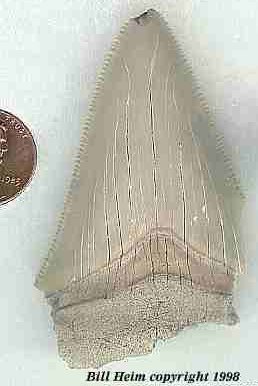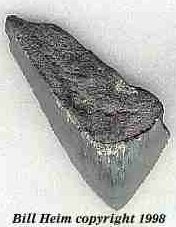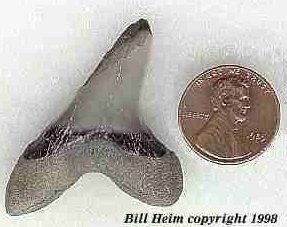|

Damage to shark teeth while feeding is a common occurence. Tips of the teeth may
show wear and/or breakage. The tooth itself may be scratched, nicked or even bitten through
when the tooth is shed or lost in feeding. Damaged teeth are more common in the
species which feed on animals with thicker bones such as mammals or the larger fish species.
Thus we see more damaged teeth in genuses such as Parotodus, Hemipristis, Carcharhinus,
Isurus, Carcharodon and Carcharocles. then in Carcharias for example. Also
animals which feed on hard shelled invertebrates, say clams or crabs, will also show considerable
abrasion. Thus rays and shellfish eating sharks such as Ginglymostoma will also show
large degrees of wear. Posterior teeth (even in Carcharias) which contact each other
frequently during biting will commonly be worn or damaged.
Damage can be hard to tell from natural erosion or fossilation wear and breakage but
there are indicators: The tooth may be sharp and fresh elsewhere except at the damaged
part. The tooth may be broken off and then the broken end smoothed. Bitten off teeth,
particularly large ones will often show smooth, curved surfaces at the bite location.
There may be marks or serration scratches on the enamal. The tooth is less often
splintered at the break than with post depositional breakage. To illustrate how common
this type of damage is, all the illustrated teeth were found during one collecting trip.
The first image (figure 1) is that of upper and lower Isurus xiphodon teeth showing
the broken and then slightly smoothed blade tips characteristic of feeding damage.
The next image (figure 2) is another Carcharocles tooth. This tooth
not only shows feeding wear at the tip of the tooth, but the
root has been bitten at least three to four times as evidenced
by large cut marks and sheared off pieces and then the lower part of the root was
completely sheared off by another bite.
 |
 |
Fig. 1 - Isurus xiphodon
Upper and Lower |
Fig. 2 - Carcharocles |
Figure 3 is that of tip of a large Carcharocles tooth. The worn, phoshatized overall
appearance of the tooth indicates post-depositional wear. However, this tip was originally
sheared off the rest of the blade by being bitten. The curved, tooth-shaped cut clearly indicates this.
The final image (figure 4) is from a large mako (Isurus) tooth which was broken off
and then the broken tip smoothed probably from continued feeding.
 |
 |
| Fig. 3 - Carcharocles |
Fig. 4 - Isurus sp |
|